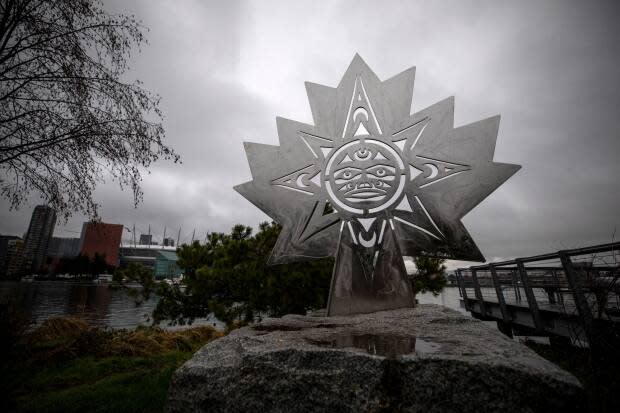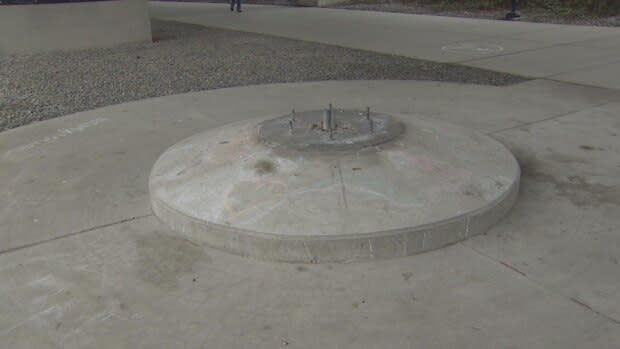Vancouver's lasting 2010 Olympic legacies, from big arenas to iconic art

No grand monuments — but no white elephants either.
When considering the physical legacy of the 2010 Olympics, the impact to Vancouver was subtle compared to most host cities, says Vancouver's chief planner at the time.
"I remember doing interviews about why there wasn't any famous architect coming to town to do big famous buildings, as if that was the most important and best illustration of success for an Olympics," said Brent Toderian.
"It wasn't about who the name of the architect was, it was about the success of these facilities after the Games as great additions to the livability of our communities."
In Metro Vancouver, the number of facilities for the games was relatively small, but all of them — the new Convention Centre, Olympic Village, the Richmond Olympic Oval, Hillcrest Centre and UBC Winter Sports Centre — are used on a daily basis today, most of them repurposed from how they were set up during the Olympics.
"It's fun to take someone to Hillcrest and ask them 'would you have guessed that this was where Olympic curling was held?'" said Toderian, referring to the curling site converted into a community centre with a swimming pool, hockey rink and public library.
"People will not necessarily guess that, but what they will do is marvel about what a great community facility it is ... that's a very Vancouver thing, in the sense that it didn't air on the side of being sexy and superficial. What it was, at the end of the day, was eminently practical and successful."
WATCH our breakdown of every single Olympic legacy
Affordable housing in Whistler
The everyday impact of the Olympics in Whistler is more direct, with facilities built for the games still being used in the same way.
"Those amenities that were put on the ground in our community have been lasting," said Whistler Mayor Jack Crompton.
"We've found value in them. We've seen kids that are born and raised in this town become Olympians."
Those include the Whistler Olympic Park for ski jumping, biathlon and cross-country skiing, and the Whistler Sliding Centre for bobsleigh, luge and skeleton.
The biggest impact for Whistler, though, was arguably the Athletes Centre and Olympic Village — built further south in Chekamus Crossing, the village and surrounding land transferred to the municipality, allowing it to expand its stock of non-market housing.
"That piece of land allowed us to make a huge jump forward," said Crompton, who says that 50 per cent of Whistler-based employees now live in resident-restricted housing, available only to locals and with covenants that deter speculation.
"It's a huge benefit to our community that allows us to participate in the world tourism economy in a way we couldn't otherwise."

Art still dots the city
One of the most pervasive legacies of the Olympics, however, may be something that had nothing to do with the core purpose of the Olympics.
"Being the games, it's not their main focus, art. But we made our space," said Connie Watts, project manager for the 2010 Aboriginal Art Program.
Watts, an artist of Nuu-chah-nulth, Gitxsan and Kwakwaka'wakw ancestry, oversaw a team of people that selected pieces of Indigenous art placed at every venue. Many of them can still be viewed to this day, including Susan Point's Spindle Whorls outside Hillcrest Centre, the Truce Installation and Salish North Star in Olympic Village, and the rebuilt Sacredness of Four structure outside Trout Lake Community Centre.
"I really wanted it to reflect the diversity of a culture. And the fact that we're represented and strong and extremely creative as a people," said Watts.
There are other exhibits that were commissioned for the games that also become well-known, including Ken Lum's iconic East Vancouver sign and the giant birds at the Olympic Village.
But the smallest artistic legacy? There was a large vase-like structure called Garde-Temps placed under the Cambie Street Bridge, turning different colours throughout the night.
It's gone now, but the podium for it remains — a reminder of how legacies can come in all shapes and sizes.




